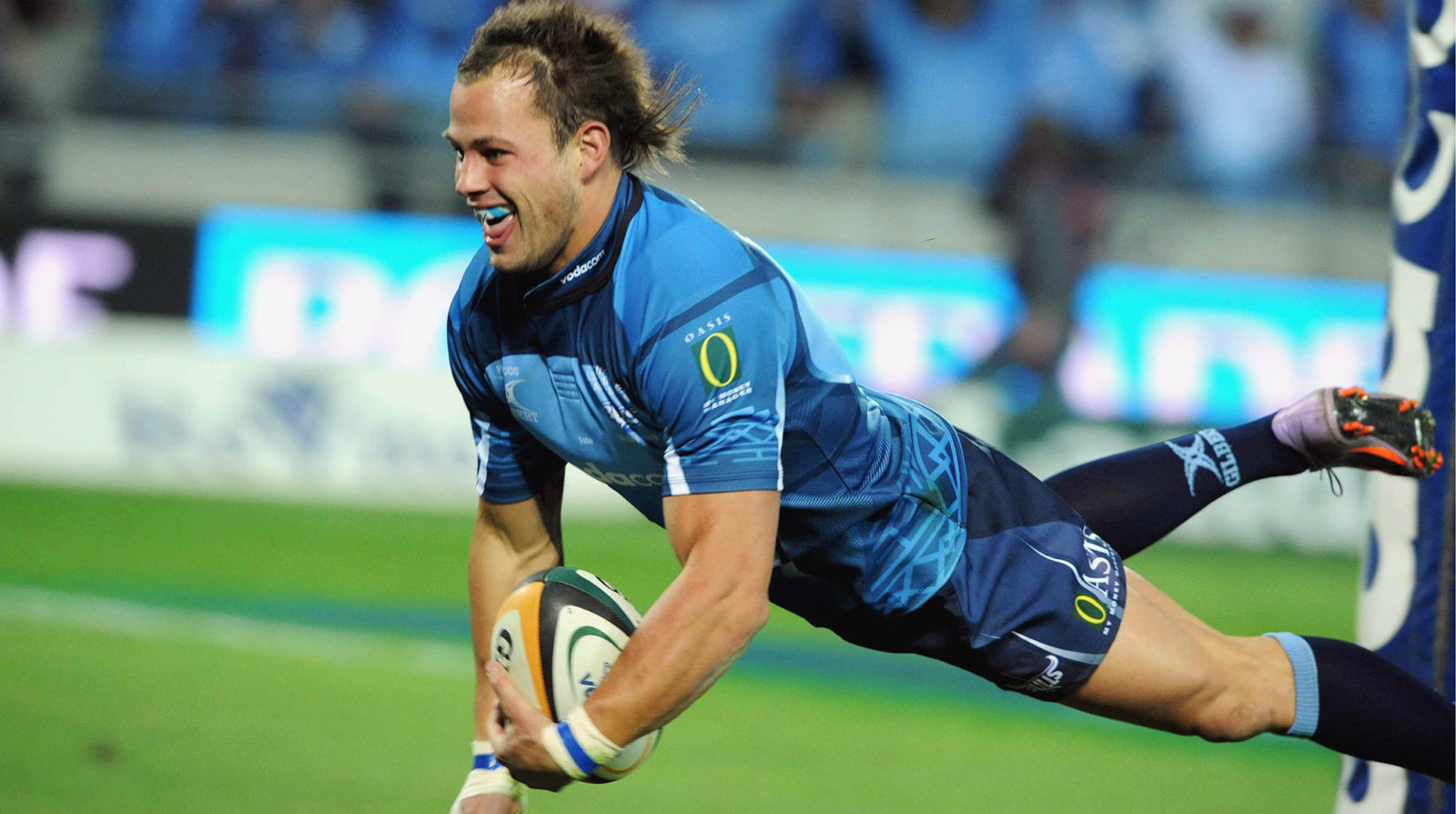
Days of unity: When Super Rugby came to Soweto
by Craig RayTen years ago, the Bulls moved out of their Loftus Versfeld home to accommodate some very welcome guests – the world – for the 2010 Fifa World Cup. But the Pretoria team had a Super Rugby semi-final and, as it turned out, a final to play. Instead of seeking a familiar alternative, they took the game to Orlando Stadium in Soweto and the rest is, well, history.
Vilakazi Street in Soweto had never seen and heard anything like it. At 10pm on the night of 29 May 2010, hundreds of twin-cab bakkies, pumping out Kurt Darren, Bok van Blerk and Die Campbells competed with blaring vuvuzelas, trumpeted by large Afrikaans men in the afterglow of a victory, fuelled by brandy and triumph. The mood was glorious, friendly and spontaneous, as one of the most epic parties in South African sports history went into full swing.
CLOSE
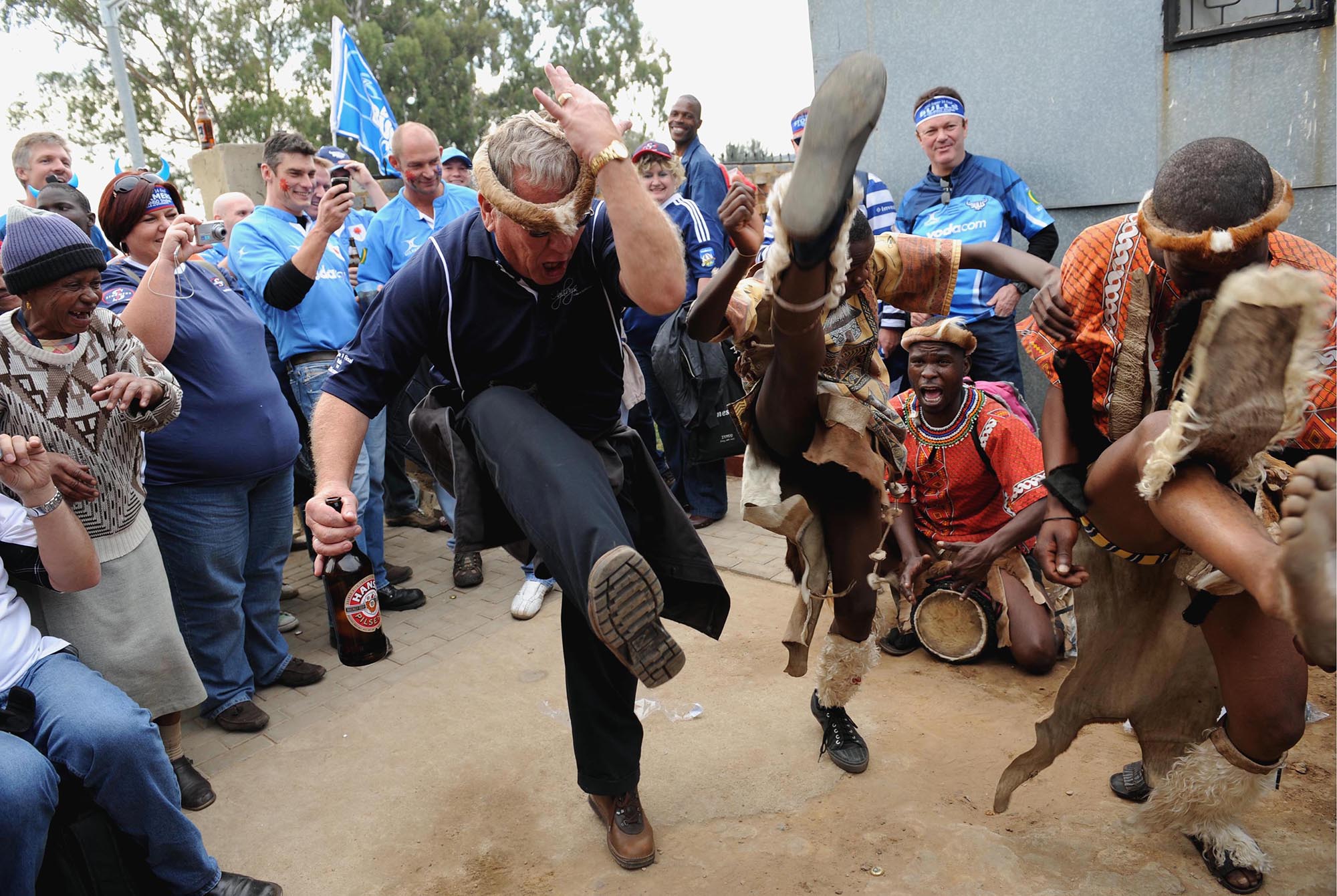
Earlier in the day, the Bulls had beaten the Stormers 25-17 to claim their third Super Rugby title in four years. It established the Pretoria-based franchise as the dominant power in world club rugby. But that was a minor story compared to one about the venue for the match. How did a team from the heart of conservative white South Africa, become the darlings of Soweto, even if only for a night?
Rewind to 2003
Display Adverts
The journey to Orlando Stadium, although unknown at the time, began seven years earlier, in 2003. It was a time when the Bulls were the laughing stock of rugby. They had won two out of 22 Super Rugby matches in 2001 and 2002, which included losing all 11 matches in ’01. In 2003, playing to a full house at Loftus, let alone at the Orlando Stadium, was as far-fetched as the Bulls playing against the All Blacks on the moon.
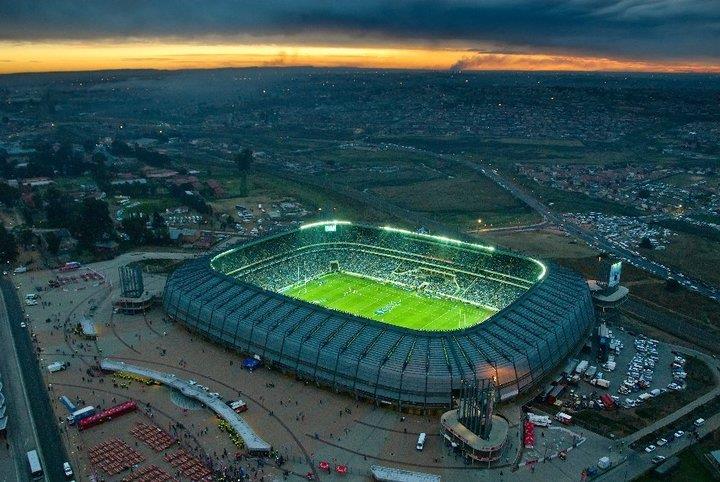
In 2003, a Local Organising Committee (LOC) was preparing its bid to Fifa for the right to host the 2010 World Cup in South Africa. Three years earlier, South Africa had lost by one vote to stage the 2006 tournament after New Zealand Fifa member Charlie Dempsey abstained from voting in scandalous circumstances. It was later alleged in Swiss court papers that Dempsey took a bribe to ensure the 2006 tournament went to Germany.
Undeterred, South Africa decided to bid again. The bid book needed to sell the country’s capability to Fifa, but also balance a strained budget. Building new stadiums was costly. Repurposing older stadiums was much more cost-effective and elegant, so long as the arena was already close to meeting requirements.
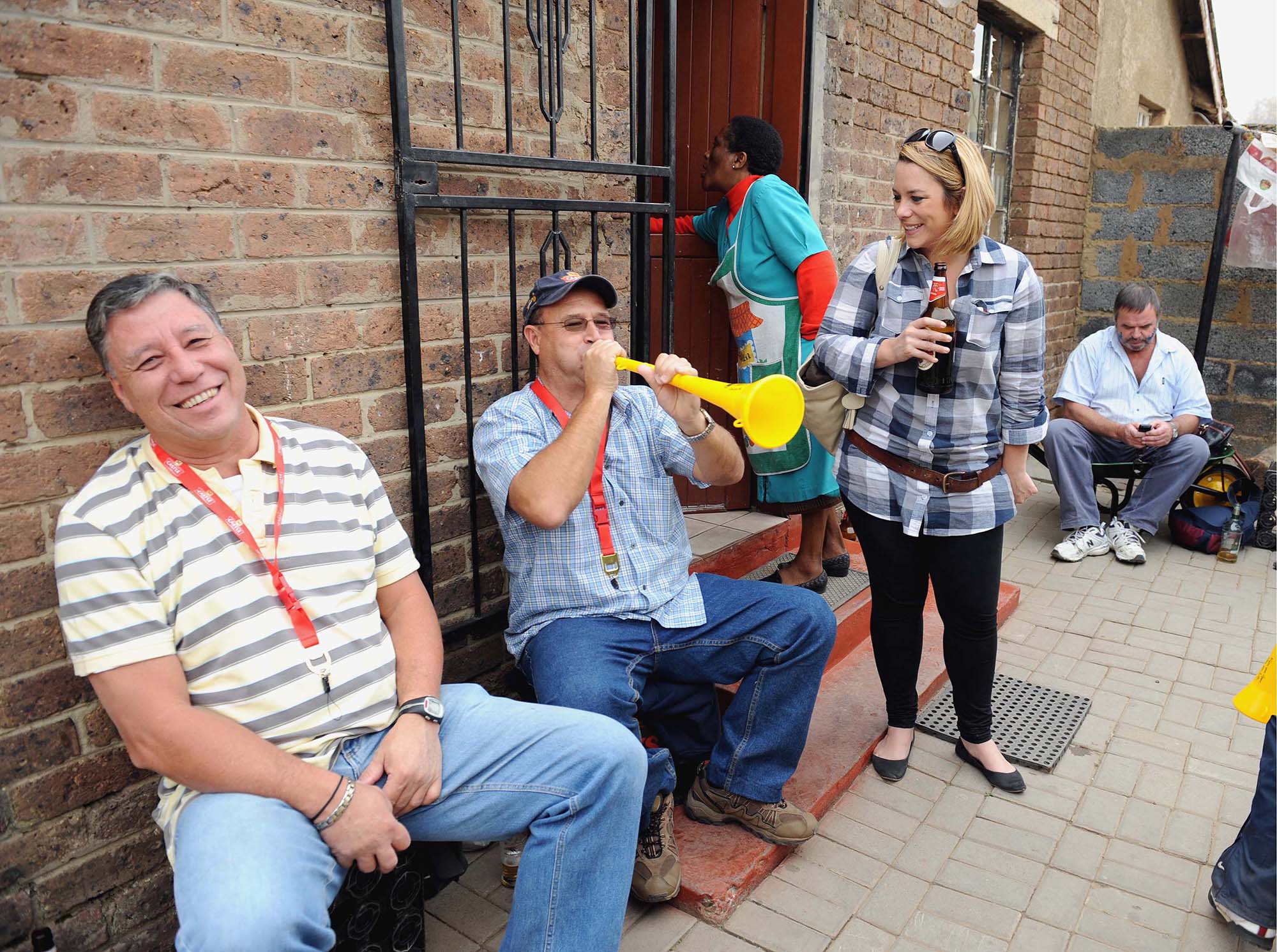
Loftus Versfeld – the spiritual home of rugby in Pretoria – met the standard. The cathedral built on the sweat and blood of men such as Uli Schmidt, Louis Moolman and Naas Botha would be a perfect venue for football stars to write their own legend.
When the LOC came knocking on Bulls chief executive Barend van Graan’s door in 2003, asking whether Loftus would make itself available for football and the 2010 World Cup, he was more than willing to listen.
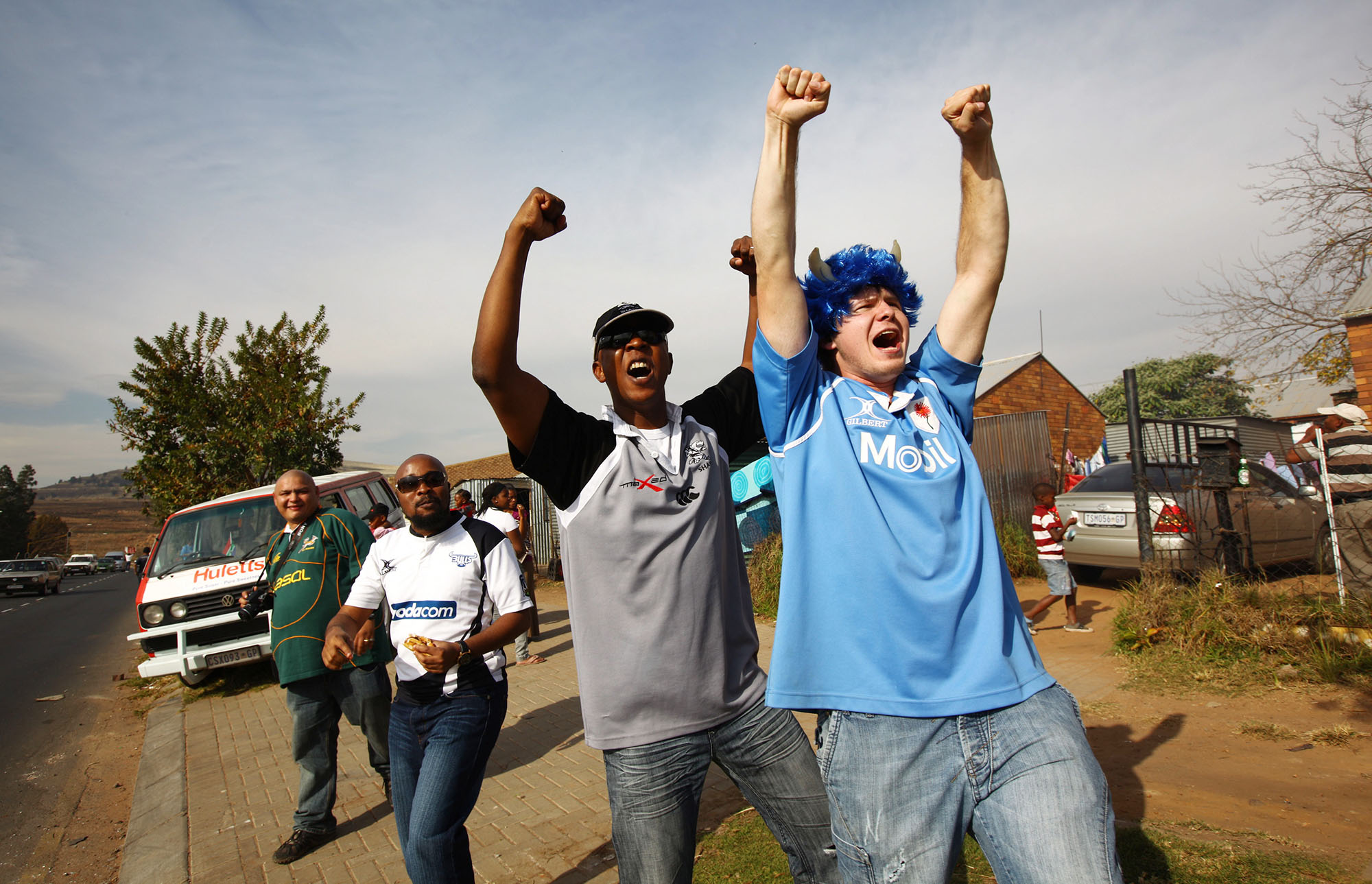
Only a smattering of fans attended Bulls games at the time. Corporate suite and season-ticket income was poor and the stadium itself would need upgrading in the near future. If South Africa won the right to host the 2010 Fifa World Cup, Loftus would receive a much needed R140-million upgrade that would set it up for another decade or more.
“When we became part of the 2010 Fifa World Cup plans, the Bulls were not playing well,” Van Graan told Daily Maverick. “Honestly, it was not in our mind at the time that hosting a Super Rugby semi-final and final at home, seven years in the future, would be an issue.
Display Adverts
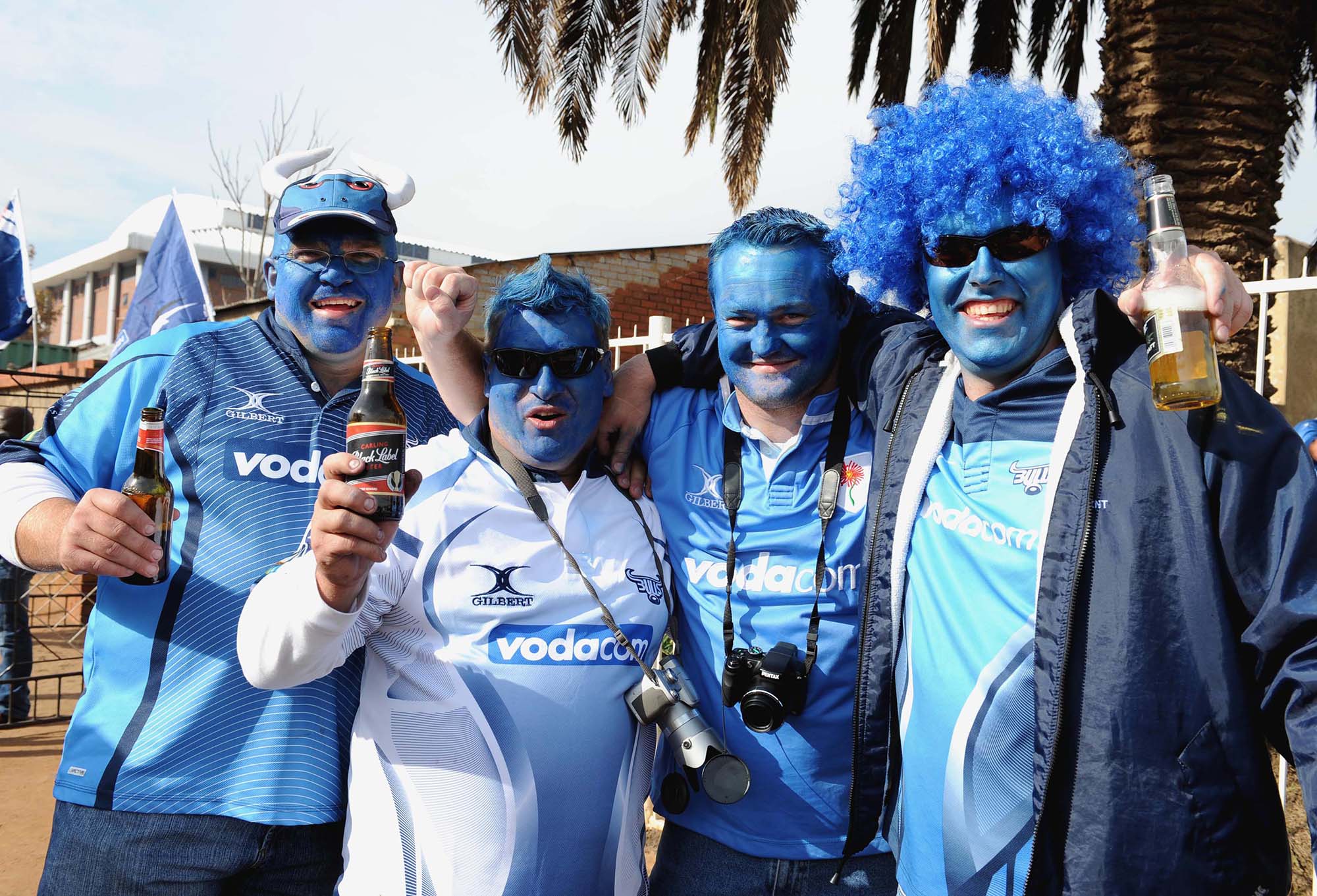
“As it turned out, in 2009 Loftus hosted the Confederations Cup [traditionally held one year before the World Cup in the host country as a trial run] but there was no clash with dates even though the Bulls made the final that year too.”
South Africa won the right to host the World Cup in 2004 and from that day on, the clock started ticking to 11 June 2010 and the World Cup’s opening game.
Van Graan perhaps underestimated his own abilities as a CEO because he played a crucial role in establishing the Bulls as a world force between 2003-2010. The Bulls’ success ultimately led to the logistical problems of finding a stadium for the 2010 Super Rugby final. But in 2003, the Bulls’ evolution into a rugby powerhouse was not obvious to most.
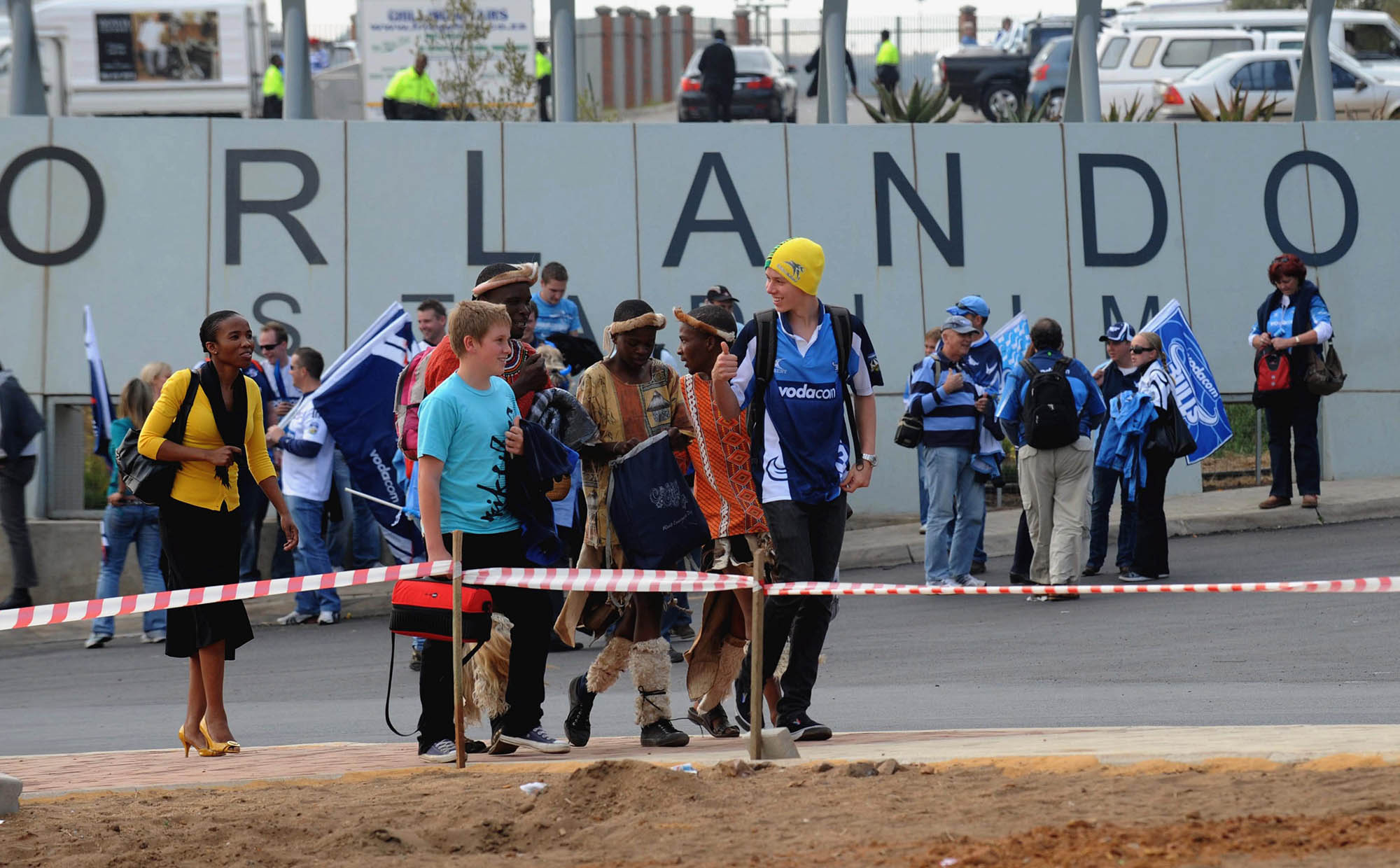
Despite heavy pressure from old Bulls’ players, Van Graan stuck with an ambitious and eccentric young coach named Heyneke Meyer. By 2005 the Bulls were play-off contenders and in 2007 they won their first Super Rugby title. Meyer moved on, but his assistant Frans Ludeke was elevated to head coach and continued to evolve the team, which won the titles again in 2009.
During this time, Loftus had undergone its facelift and the 2010 Bulls played in a newly refurbished arena, ready for the Fifa World Cup. It would, however, not be a part of the Super Rugby story if the Bulls made it into the postseason.
Fifa requirements meant that they took control of venues for the World Cup three weeks before the tournament started. When the 2010 Super Rugby fixtures were released in late 2009, everyone at the Bulls understood the potential problem that stemmed from their own success. The dates for the semi-final and final were in the Fifa window. Loftus was out of bounds.
Finding a venue for 2010 Super Rugby play-offs
Display Adverts
“From the moment South Africa won the bid for Fifa World Cup 2010, the dates for the tournament were written into the contract,” Hugo Kemp, Loftus Versfeld Stadium manager, told Daily Maverick.
“The 2010 Super Rugby season was still years away when the World Cup bid was won, but we knew even then, that the rugby dates would be touch and go.
“By the start of 2010, we knew we had to make some big decisions. As defending Super Rugby champions, we understood that the Bulls would be in play-off contention again, so we had to look at our options in the event we needed to host a semi-final and possibly a final.
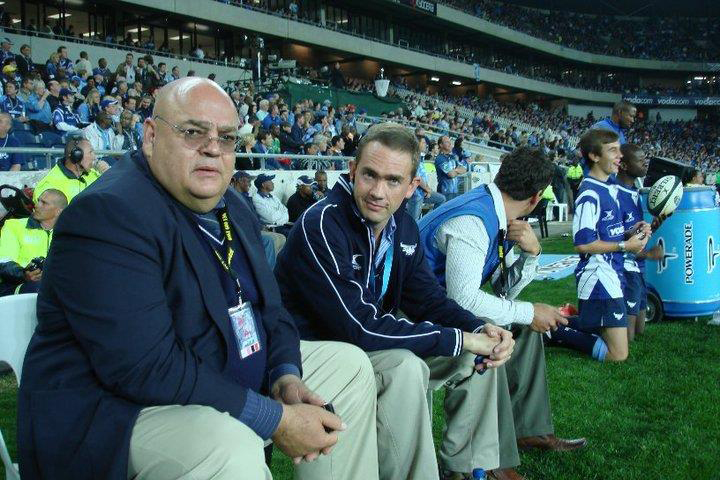
“The complication was that most of the options we considered were in some way or another involved in the Fifa World Cup, as training grounds or fans parks, which really limited us.
“At the time, we had a strong relationship with a company called Stadium Management South Africa, who really helped us in sourcing options. They still manage Dobsonville Stadium, the FNB Stadium [which hosted the 2010 World Cup final] and the Orlando Stadium. At that stage, Orlando was set aside as a World Cup training facility. But the advantage of that was that certain training venues were only required by Fifa at a later stage, unlike match venues such as Loftus. We can’t take all the credit for deciding on Orlando because it really came down to limited options.”
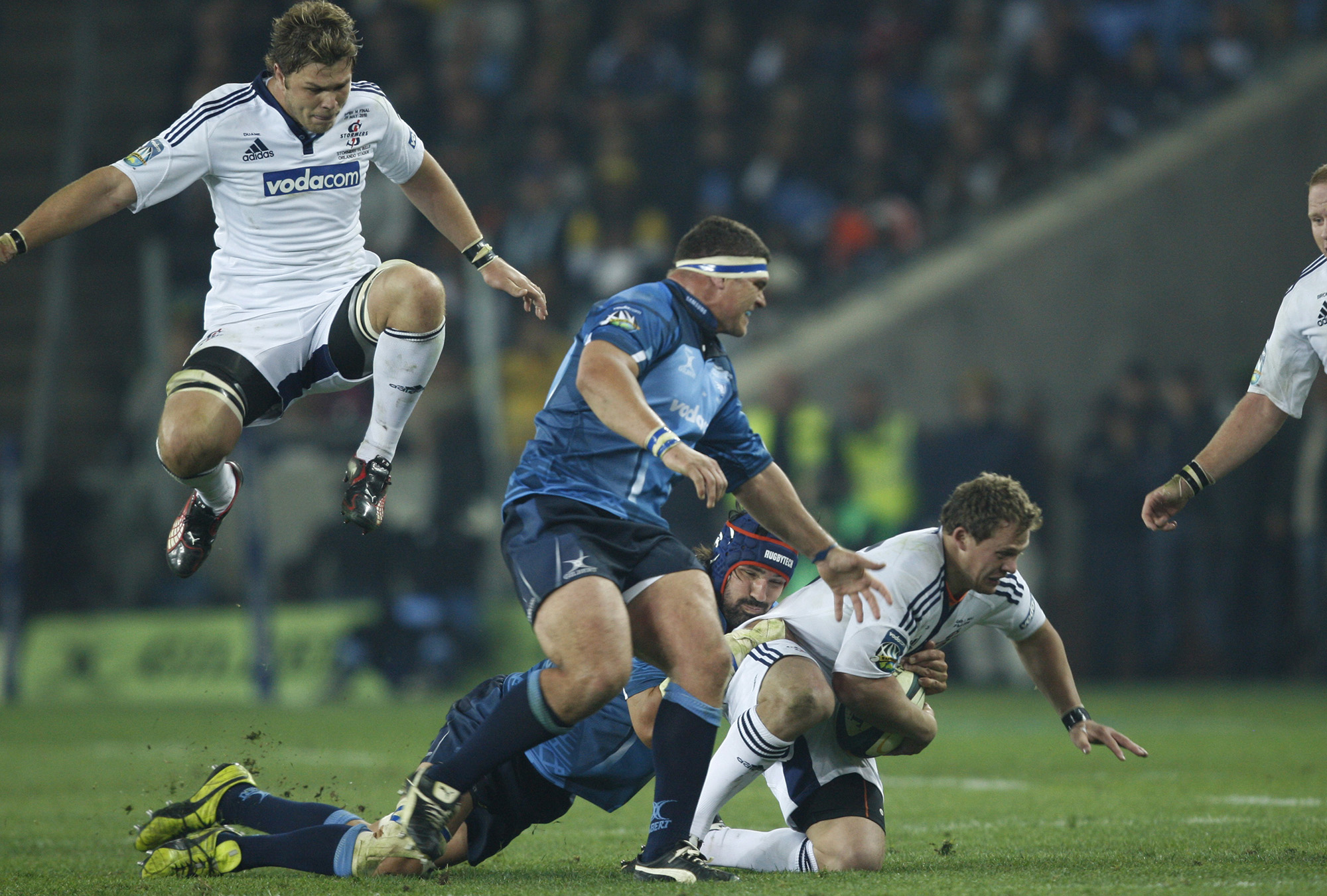
Derek Blanckensee is now general manager at football giants Orlando Pirates, but in 2010 he was the Competition Chief Officer for the LOC. He proposed Orlando Stadium as a possible venue for the Bulls’ play-off games.
“Barend called me and asked what options there were,” Blanckensee told Daily Maverick. “I knew Orlando Stadium would suit their needs, but I first had to check with the stadium designer that it had the right dimensions for hosting rugby. He assured me it did as the stadium was redesigned to be capable of hosting both football and rugby.
Display Adverts
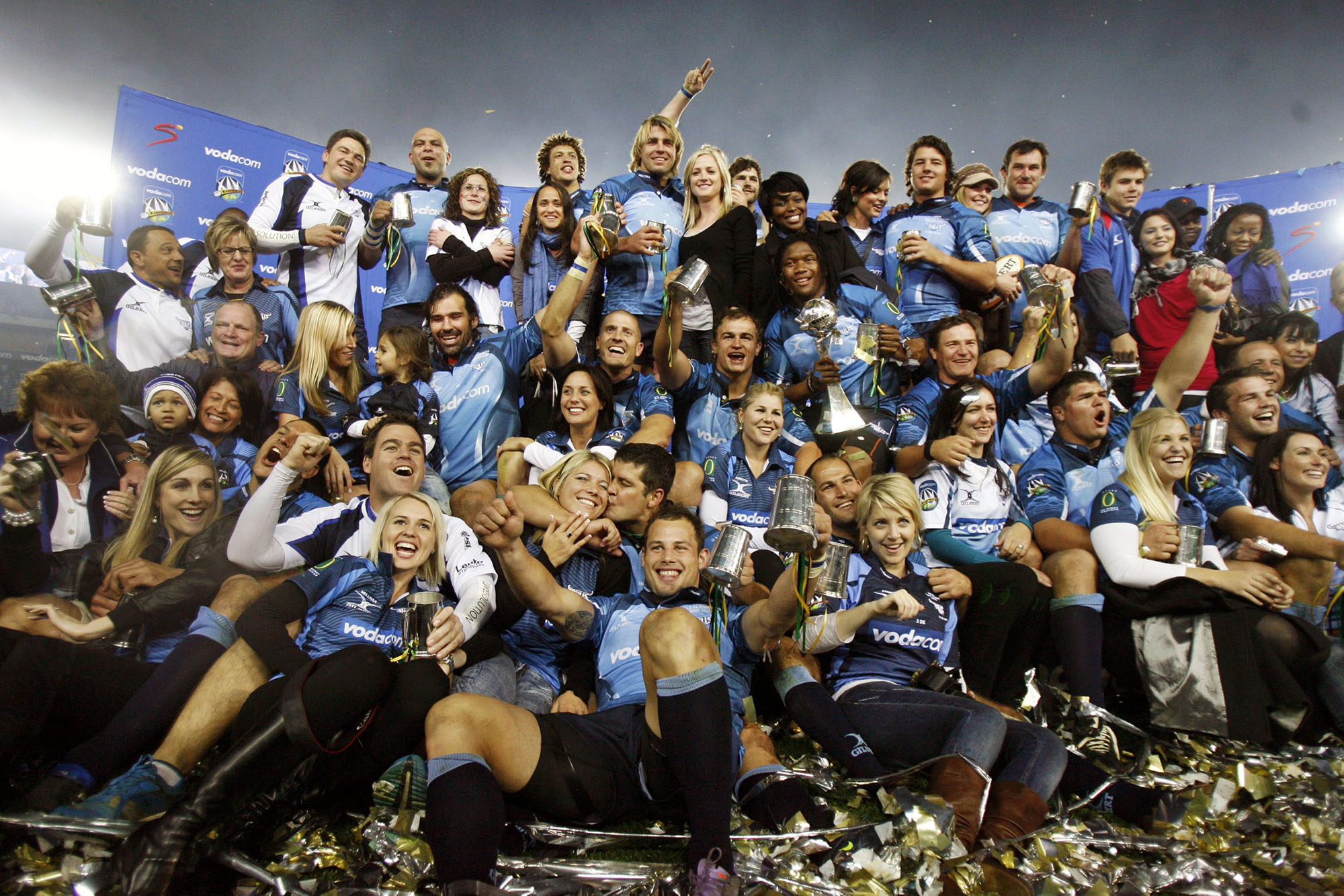
“Although the stadium was originally listed as a Fifa World Cup training venue, it was no longer going to be used for that purpose. Training venues needed to be in a certain radius of team hotels, and the Orlando Stadium didn’t meet those requirements. It was only going to be used as the venue for the Fifa World Cup opening concert.”
After the success of the 2010 play-offs at the Orlando Stadium, the Bulls received praise for their marketing savvy in taking the games to Soweto. But Van Graan admits that it was more out of necessity than design.
“We looked at the Lucas Moripe Stadium in Atteridgeville and SuperSport Park in Centurion as two other options,” Van Graan says. “But both have capacities of fewer than 30,000 and Lucas Moripe was also being used by the German team as a training venue.
“SuperSport Park was also a fan park for the World Cup, which was another factor counting against it. We were in a mess for a while. Before we considered Orlando, the only semi-feasible options were to play at Newlands in Cape Town or King’s Park in Durban.
“Through the assistance of the LOC and Stadium Management South Africa, we made a deal for the use of Orlando Stadium for the Super Rugby semi-final, and only the semi-final, because Orlando Stadium was set to host the World Cup’s opening concert.
“The concert was scheduled for the Wednesday after the Super Rugby final [29 May] and we didn’t expect to be able to play at Orlando. But at that stage all I said was: ‘let’s get somewhere to play the semi-final and we’ll worry about a final venue afterwards if we need to.’
“So, afterwards we had to ask the LOC if we could use Orlando for the final and they helped make it happen. From the Bulls’ side, it was an easy sell to the board after the success of the semi-final [the Bulls beat the Crusaders 39-24]. We all realised the potential for a great occasion and saw it as a quantum leap forward for the Bulls and rugby.”
Display Adverts
Challenges of playing in Soweto
Hosting professional sports events requires the seamless interactions of many moving parts, which is a tough enough challenge at the best of times. Taking the biggest provincial rugby match in the world into a new venue at short notice posed many challenges, not least of which came from Bulls supporters, who were initially sceptical of Orlando Stadium.
Most of those fears were allayed after the semi-final, which proved a crucial dry-run for the final from a logistics perspective. But severe traffic jams meant that the Orlando Stadium only filled by halftime in the semi-final. The Bulls also refined their strategy in terms of assisting supporters to travel to Orlando Stadium, about 60km from Pretoria.
“We had some challenges with supporters, who were really worried that it wouldn’t work and were angry we were going to Soweto,” Van Graan recalls. “I was called all sorts of names by some of them.
“Also, on the day of the semi-final, which was due to kick off at 5pm a sold-out FNB Stadium was having its first dry run for the World Cup, hosting a match between Chiefs and Pirates at 3pm. That was another 90,000 people a couple of kilometres up the road. It led to some issues with traffic, as most of the traffic department left us alone, and went to the soccer.
“We had discussions about what to do because rugby supporters were stuck. One option was to delay kick-off, but with TV schedules and the players’ mental state to consider, it wasn’t an option. It took until halftime to fill the stadium, but the rest is history.
Even for the vanquished Stormers, who were worthy contenders in 2010, the bitterness and pain of defeat in their first, and so far, only appearance in the final, was offset by knowing they were part of something special.
Display Adverts
dm_load_ad('div-gpt-ad-1590700887-30', 'DailyMaverick_Articles_Mobile_300x450', 'sport', 'Craig Ray', '635879');
“When we won the semi we suddenly had another problem though because we needed a venue for the final. Fortunately, LOC chairman Danny Jordaan was supportive and he lobbied Fifa to allow us to play.”
By that stage, almost the entire Bulls staff had vacated their offices at Loftus as the stadium had been taken over by Fifa. Some worked at Vodacom’s offices in Hatfield, others at SuperSport Park, while Kemp and the operations department retained their offices at Loftus.
“It was much like we are working now during lockdown, only without Zoom and Google Hangouts,” Kemp says with a laugh. “It was a logistic and communication challenge in every aspect, from ticket sales to preparing the Orlando Stadium.
“The capacity of Orlando Stadium was a little under 40,000. We knew it would be sold out for the final, especially as the mood had shifted and supporters not only wanted to watch a rugby match, but be part of an incredible occasion. So, we had to try to accommodate our season-ticket and suite holders, which required about 27,000 tickets at that time.
“It was a big advantage having played the semi-final at Orlando because it gave us some time to rectify the issues for the final. In the two weeks of the semi-final and final I spent most of my time at Orlando liaising with the various role players, including the Johannesburg traffic department.
“In Pretoria I had great relationships with organisations such as the traffic department and police because I had been working with them daily, for years. Now, I had to go to Joburg for the most important game of the year, in a new stadium and work with people I had no relationship with. It was a challenge because they had their own ideas how to do things, but ultimately it paid off and everyone saw the bigger picture. The commitment was amazing and everyone wanted to make it work.”
Game Day
Display Adverts
The Bulls laid on more buses for fans, from more collection points around Pretoria and through the hard work of many people, the event was a celebration and in a way, started the party that was the 2010 Fifa World Cup.
Residents of Soweto opened their arms, hearts and homes to rugby fans who descended on Orlando for a magical day that could be repeated in future, but never replicated.
Bulls fans mingled in the streets with Soweto locals, some even taking over the front yards of homes in Orlando to braai and kuier before kick-off. In a beer tent outside the stadium Afrikaans duo Die Campbells belted out sokkie treffers while black and white supporters danced as if they were listening to a kwaito beat.
Kurt Darren’s rendition of the national anthem was spine-tingling while the supporters singing of Nkosi Sikelel ’iAfrika brought tears to the eyes. A predominantly white rugby crowd had never sung the first part of the anthem with more gusto. Something brilliant took over that Saturday.
“I’ve never played in an atmosphere like it,” former Bulls and Bok great Fourie du Preez told Daily Maverick. “Those two weeks in Soweto were the two favourite weeks of my Bulls career. I remember looking out of the bus window on the way to the stadium and being blown away.
“Bulls supporters were having braais on the driveways of residents of Orlando, who had opened their homes. The stigma of the Bulls being conservative, white Afrikaners changed that day as they sat in shebeens and shared life with fellow South Africans. It was mind-boggling.
“Inside the stadium the atmosphere was something I had never experienced before. The sound of the vuvuzelas seemed to suck the air out of the arena. I can’t really explain it, but it was different, in a great way.”
Display Adverts
Even for the vanquished Stormers, who were worthy contenders in 2010, the bitterness and pain of defeat in their first, and so far, only appearance in the final, was offset by knowing they were part of something special.
“It was the last year of Super 14. The tournament was set to expand to 15 teams in 2011 and we had a chance to play the Bulls, not at Loftus, but at the Orlando Stadium in the Super Rugby final,” recalls Stormers lock Anton van Zyl.
“We had all been wearing Bafana Bafana shirts to practice on Fridays as part of the national build-up for the Fifa World Cup. Suddenly we were, in a way, an integral part of the excitement because that final was being played in Orlando. That brought another edge to the occasion, for sure.
“Were the Stormers happy the game wasn’t at Loftus? Let me put it this way: we were more excited about the prospect of going to Orlando Stadium than we were about going to Loftus. That was because it was a once-off occasion, as much as anything. We had won away twice in New Zealand that year so we were confident we could win anywhere.
“We flew up the day before and did our captain’s run at the Orlando Stadium on Friday. I don’t recall much about that, but what I do vividly recall is the bus ride to the stadium from our hotel in Fourways.
Television statistics of the game revealed some staggering numbers, especially as it was also shown on the free-to-air SABC as well as rights holder SuperSport. Over 2.9 million people viewed the match – a more than 100% jump from the 2009 final when the Bulls beat the Chiefs at Loftus.
“I probably shouldn’t say this, but I realised something really big was happening when the police escort, leading the team bus down the highway, became overzealous. There were some cars not giving way fast enough, so the police escorts forced their way alongside those vehicles, wound down their windows, pulled out their weapons and pointed them at those drivers demanding the cars to pull over. It was insane.
Display Adverts
“I didn’t play Tests, but I played games for the Barbarians and in some finals and to this day, I get goosebumps when I think about that atmosphere. To say it was electric, is like saying the coronavirus is a lethal pandemic. It’s an understatement. The noise, suspense and electricity was unlike anything I encountered before, or after.”
Stormers wing Bryan Habana, who had won two Super Rugby titles with the Bulls in 2007 and 2009, had moved south to Cape Town and was enjoying a strong debut season with the Stormers. He had intimate knowledge of the Bulls and of playing at Loftus, but because the final was in Orlando, he was just as bowled over as his teammates.
“In that game, that final, I thought I knew what we were going to face but looking back, I had no comprehension of what we ultimately did face,” Habana told Daily Maverick.
“It was so loud, I couldn’t hear calls from teammates five metres away. Even though we had worked on some non-verbal communication plans in the build-up to the game, it was so much more intense when we faced the reality. We didn’t adapt as quickly as we needed to, and the Bulls made a faster start, which cost us the game.”
Missed opportunity
The success of the occasion, the memories for those there and the goodwill it generated, particularly for the Bulls, was never fully harnessed in subsequent years.
After the match, Bulls captain Victor Matfield and coach Ludeke were convinced it was the beginning of a journey that would link the Bulls and Orlando for years to come
Display Adverts
“We saw what sport can do for the country in the last two weeks,” Matfield said. “It can build bridges and break down barriers. People who 14 days ago would never have come to Soweto now love Soweto. Hopefully, the soccer World Cup will take this feeling further and continue the momentum we have created.”
Ludeke added: “I can’t see why we wouldn’t play here again because it’s an amazing atmosphere, which is what you want as a home team. Overseas teams will battle here with a combination of altitude and atmosphere where the crowd gets into your head.
“Soweto has climbed into hearts and it has been an awesome experience for us.”
Television statistics of the game revealed some staggering numbers, especially as it was also shown on the free-to-air SABC as well as rights holder SuperSport. Over 2.9 million people viewed the match – a more than 100% jump from the 2009 final when the Bulls beat the Chiefs at Loftus.
The percentage of black viewers rose by a staggering 127% between 2009 and 2010, which accounted for 30% of the total measured viewing audience, according to sports and marketing research body BMI. The fact that the match was shown on SABC was a major factor. But, because the match was played in Soweto, it enticed a new audience that should have been harnessed and embraced subsequently. Instead, what should have been the start of a journey for the Bulls and the larger rugby community, has ended up being a moment frozen in a time capsule.
“It’s disappointing that the Bulls have never been back to Orlando,” Du Preez says. “I don’t know how many people live in Soweto, but there are millions and most of them became Bulls supporters because of those two games. We received so many pictures and messages from black rugby fans in Bulls jerseys in the days leading up to the final, and afterwards as well. It’s unfortunate that we didn’t have the vision to go back and make a yearly thing out of it.
“The players loved the experience and they would have loved to go back, do clinics and work with the community to take rugby to the next level. We missed an opportunity because it can’t be repeated. It was spontaneous and not forced.” DM

Craig Ray
Comments - share your knowledge and experience
Please note you must be a Maverick Insider to comment. Sign up here or sign in if you are already an Insider.